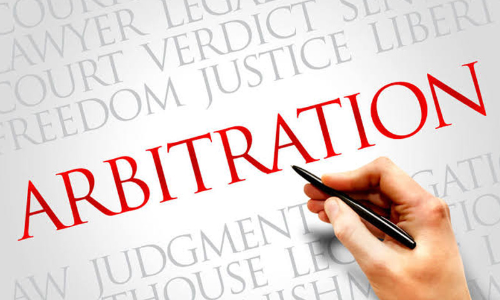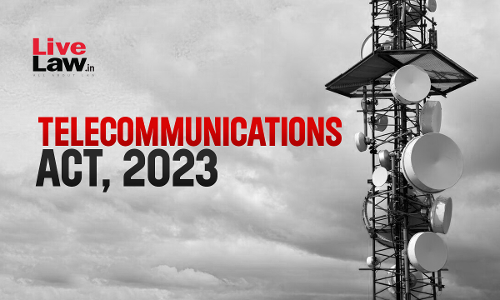Law School Articles
A Primer On Avoidance Transactions Under Insolvency And Bankruptcy Code
Corporate insolvency and bankruptcy are critical issues that impact the financial stability and operational viability of businesses. In India, the Insolvency and Bankruptcy Code, 2016 (“Code”) serves as a comprehensive framework to address insolvency and ensure timely resolution. During insolvency or liquidation proceedings, the primary goal is to maximize the recovery of assets of the Corporate Debtor and distribute them fairly among stakeholders, ensuring that creditors are paid in...
Examining Public Examinations (Prevention Of Unfair Means) Act: Does It Pass Critical Lens?
They say a single piece of paper cannot decide your future. In India, quite the opposite is true. The frequent rumours of paper leaks, malpractices at the examination center, discrimination with the candidates, etc., with regard to public examinations, have marred even the little faith in the testing agencies. With the recent rising controversies in the National Eligibility-cum-Entrance Test (NEET) UG-2024, the focus is steered towards public examinations in general. To what extent are the...
Community Service: A Progressive Shift Introduced By Bharatiya Nyaya Sanhita
The Indian Penal Code (IPC) has historically prescribed five types of punishments: (1) Death; (2) Imprisonment for life; (3) Imprisonment, which is of two descriptions—rigorous and straightforward; (4) Forfeiture of property; and (5) Fine. However, the introduction of Section 4(f) of the Bhartiya Nyaya Sanhita (BNS) marks a significant change, adding a sixth form of punishment: community service. It is essential to explore the implications of this addition, especially in the context of...
Cross Border Insolvency
The transfer of money from one country to another to acquire loan money or ownership shares is called 'cross-border investment'. International trade has existed considerably longer than cross-border investment, even though it has been a significant aspect of human activity for decades. An immediately recognizable feature of present-day cross-border investments is the deep historical basis of colonialism and imperialism of the nineteenth-century period. The European powers chiefly...
The Significance Of The Seat Of Arbitration
Seat of arbitration refers to the legal jurisdiction where the arbitration is supposed to take place. It establishes a geographical boundary for the arbitral procedure and related litigation.It is important to specify the seat of arbitration clearly when drafting the arbitration clause in any agreement. Any ambiguity in the arbitration clause may lead to unnecessary litigation. Many agreements that contain arbitration clause stays silent about the seat of arbitration; this leads to confusion...
Tech-Driven Justice: Unraveling The Dynamics Of Online Dispute Resolution
The Future of Justice Was Not Limited to the Court Room. In A Current Scenario the Advancement of Technology and Development. Justice Will be Easily Accessible, less time-consuming, Strong, and Focused on Achieving Fair Outcomes. Alternative dispute resolution (ADR) has already taken place in dispute resolution before going to court. Nowadays, technology has become one of the parts of the justice system. The court heard the matter through a virtual electronic platform.[1]. As we know,...
Mediation Made Simple
Mediation stands as a cornerstone of alternative dispute resolution, offering a pathway to resolve conflicts amicably and preserve relationships. This article explores the essence of mediation through a practical lens, using illustrative examples and legal insights to demystify its intricacies. Through the lens of hypothetical scenarios and other illustrations, this article depicts how mediation can transform conflicts into win-win solutions. Delving deeper, it dissects the core...
Analysing The Telecommunications Act 2023: Is It A Draconian Law?
Based on the IndianTelegraph Act of 1885, the WirelessTelegraphy Act of 1933, and the TelegraphWires (Unlawful Possession) Act of 1950, the Indian Parliament introduced the Telecommunications Act of 2023 to update the nation's century-old telecom legislation. Almost a year after the consultation process for its 2022 counterpart, the draft Indian Telecommunication Bill, 2022 (or "Telecom Bill, 2022"), the Telecommunications Bill, 2023 (or "Telecom Bill, 2023") was introduced in the Lok...
Balancing Free Speech And National Security: A Critical Analysis Of Section 152 Of The Bhartiya Nyaya Sanhita And Section 124-A Of The IPC
Section 124-A of the IPC (hereinafter referred as “IPC”) is highly controversial, with numerous petitions challenging its constitutional validity. The state argues that sedition falls under 'public order' in Art. 19(2), but balancing this with freedom of speech is challenging for the Court. There are series of cases from Tara Singh to Kedarnath Singh to S.G Vombatkare at present, the sedition has seen the twists and turns in its constitutionality, inclusive of the 1951 amendment[1]. ...
Judicial Efficiency: Beyond Working Hours And Vacations
The Supreme Court of India's summer vacation has sparked debate over the Judges' working hours and vacations which begins on May 20th and ends on July 8th. Sanjeev Sanyal's recent remark, who is the Principal Economic Advisor to the Prime Minister of India, about judges working for a few hours and then going on summer vacation was censured by Tushar Mehta, Solicitor General of India in the courtroom of Justices BR Gavai and Sandeep Mehta as “ill-informed” and a mere stunt to gain attention. In...
The Difference In A Criminal Writ, Criminal Revision And 482 – The Plight Of A Litigant In Choosing The Gate
Section 482 of the CrPC provides for a wide ambit of powers of the High Court to secure the ends of justice. The power vested in Article 226 of the Indian Constitution empowers litigants to directly approach High Courts to safeguard their fundamental rights and rectify injustices. Criminal Revision, on the other hand, offers a streamlined review of inferior court orders. These three avenues fall within the ambit of three of the main functions of the High Court.This article seeks to ...
Striking A Balance Between Intellectual Property Rights And Human Rights In The Era Of Technology And Innovation
Intellectual property (IP) constitutes the legal realm encompassing creations of mind such as artistic works, literary masterpieces and innovations etc. Intellectual property rights are a bundle of exclusive rights over these creations of mind which is vested with the creator to use his creations without fear of competition, at least for a specific period of time. The Constitution of United States, written in 1787 was the first document to recognize such rights. Later on these rights...














